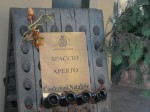Bubbels deel 2.
Lambrusco, de verrassend andere bubbel.
Een koe is een beest, dus een beest is een koe.
God is liefde en liefde is blind. Andrea Bocelli is blind, dus Andrea Bocelli is God…..
Bubbles part 2.
Lambrusco, the surprising, other bubble.
A cow is an animal, so an animal is a cow.
God is love, love is blind, Andrea Bocelli is blind, so Andrea Bocelli is God…. Het klinkt logisch, maar dat is het natuurlijk niet. Zo is het ook met mousserende wijnen. Voor de meeste mensen zijn ze wit, hooguit roze, in ieder geval Frans en dus Champagne. Alles wat bruist wordt Champagne genoemd: Vonkelwijn, Prosecco, Cremant de Loire, Alka Seltzer, TrentoDoc, Franciacorta, Clairette de Die en nog veel meer. Jammer, want er zijn naast diverse schitterende Champagnes, nog veel meer mooie bubbels met een eigen identiteit.
Het klinkt logisch, maar dat is het natuurlijk niet. Zo is het ook met mousserende wijnen. Voor de meeste mensen zijn ze wit, hooguit roze, in ieder geval Frans en dus Champagne. Alles wat bruist wordt Champagne genoemd: Vonkelwijn, Prosecco, Cremant de Loire, Alka Seltzer, TrentoDoc, Franciacorta, Clairette de Die en nog veel meer. Jammer, want er zijn naast diverse schitterende Champagnes, nog veel meer mooie bubbels met een eigen identiteit.
Lambrusco
In deel 2 van de bubbel-serie, aandacht voor Lambrusco. Een wijn die om verschillende redenen aandacht verdient. Veel onwetenden beschimpen de wijn vaak en graag. Deze holle vaten tonen daar eigenlijk alleen maar mee aan dat ze geen verstand van zaken hebben. Gelukkig beschikken we in Nederland ook over verschillende objectieve, deskundige en ervaren wijnschrijvers en collega’s als Cuno van ’t Hoff, Esmee Langereis (Elle Eten), Jeroen Margés, Ingrid Larmoyeur, Harold Hamersma en Onno Kleijn zijn gelukkig ( en terecht) regelmatig zeer positief over deze bijzondere wijn.


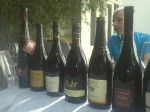
Uniek
Dat niet iedereen direct en even enthousiast reageert, is niet zo vreemd. Lambrusco is namelijk een unieke wijn en wie nog nooit een echte geproefd heeft, raakt in eerste instantie snel in de war. De wijn past niet in een gemiddeld referentiekader. De kleur is verwarrend (soms roze soms ondoorzichtig paars), de smaak (onstuimig fruitig met vaak een stevig bitter en levendige zuren), het alcohopercentage (lekker laag), de prijs (eveneens aangenaam laag)en tevens de inzetbaarheid in de gastronomie. Een korte toelichting is dus niet overbodig.
Emilia-Romagna
 Lambrusco komt uit Emilia-Romagna, de regio die verder
Lambrusco komt uit Emilia-Romagna, de regio die verder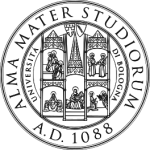 bekend staat om Ferrari, keramiek, de Universiteit van Bologna (de oudste nog functionerende ter wereld), Prosciutto di Parma, Parmigiano Reggiano, allerlei eigen
bekend staat om Ferrari, keramiek, de Universiteit van Bologna (de oudste nog functionerende ter wereld), Prosciutto di Parma, Parmigiano Reggiano, allerlei eigen 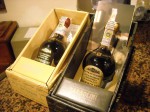 pasta-soorten en salumi, piadini, mortadella, aceto balsamico en natuurlijk wijn; vooral Lambrusco in Emilia en Sangiovese in Romagna.
pasta-soorten en salumi, piadini, mortadella, aceto balsamico en natuurlijk wijn; vooral Lambrusco in Emilia en Sangiovese in Romagna.
Emilia-Romagna is goed voor een jaarlijkse productie van bijna 1 miljard flessen wijn. Het merendeel bestaat uit enkelvoudige ‘slobbers’, waarvan de meeste afkomstig zijn van de vruchtbare Povlakte in Emilia. Daar beschermen alleen de pergola gesnoeide wijngaarden de druiven tegen de zinderende zomerhitte. De opbrengst is er hoog en de kwaliteit over het algemeen niet meer dan redelijk. Heel anders is dat in de heuvels, daar waar de temperatuur wat getemperd wordt (zeker in de nacht) en de druiven meer fijne en complexe aroma’s kunnen ontwikkelen, vooral in Romagna.
de druiven tegen de zinderende zomerhitte. De opbrengst is er hoog en de kwaliteit over het algemeen niet meer dan redelijk. Heel anders is dat in de heuvels, daar waar de temperatuur wat getemperd wordt (zeker in de nacht) en de druiven meer fijne en complexe aroma’s kunnen ontwikkelen, vooral in Romagna.
De druif
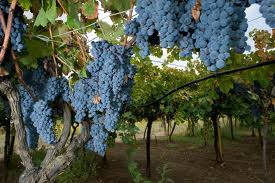 Het lijkt zo makkelijk, een wijn die genoemd is naar het druivenras waarvan hij wordt gemaakt. Dat is echter iets te eenvoudig gesteld, want de ene Lambrusco is de andere niet.
Het lijkt zo makkelijk, een wijn die genoemd is naar het druivenras waarvan hij wordt gemaakt. Dat is echter iets te eenvoudig gesteld, want de ene Lambrusco is de andere niet.
De druif behoort tot de Lambrusco-familie die verschillende broers, neven en ook enkele roze nichten kent. De druif behoort tot de Vitis vinifera en was al bij de Etrusken bekend onder de naam Lambrusca. Om het lekker eenvoudig te houden: deze Lambrusca heeft niks te maken met de Lambrusca-riparia, een Amerikaanse hybride.
In de loop van de eeuwen zijn door verstuiving meer dan 60 variëteiten ontstaan, waarvan sommige in de veneto, piemonte en zelfs op Sicilie voorkomen. De belangrijkste zijn de Grasparossa, Maestri, Marani, Monstericco, Sorbara en Salamino zijn, soms bekend onder allerlei lokale synoniemen, waaronder Abrostine, Abrostino, Abrostolo Dolce, Abrustano Nero, Broustiana Rose, Colore, Colorino di Lucca, Colorino di Valdarno, Colorino Pisano, Jomarello, Raverusto en Tintiglia II. De Salamino is de meest voorkomende soort.
Meuk
Al die varieteiten en de manier waarop ze verbouwd en verwerkt worden, geeft Lambrusco in allerlei soorten en maten. De kleur kan varieren van wit en roze tot paars, de smaak van droog tot zoet, de wijn van stil tot mousserend zijn en de kwaliteit van dramatisch slecht tot zeer goed. De meeste Lambrusco is een industrieel product met niet meer dan een algemene herkomstbepaling (IGT) en weinig voorwaarden om een zekere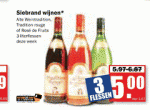 kwaliteit te waarborgen. Dit zijn de 2-liter flessen (met schroefdop) die we tegenkomen in veel supermarkten of échte Turkse pizzeria’s (uiteraard met Marokkaans, Armeens of Egyptisch personeel) en onder de noemer ‘zoete meuk’ vallen. Nederland is helaas niet het enige land waar deze goedkope, twijfelachtige fastfood-wijnen populair zijn. De familie Mariani (bekend van hun domein Banfi in Toscane) is rijk geworden met de import van miljoenen liters (min of meer Italiaanse) Lambrusco in de Verenigde Staten.
kwaliteit te waarborgen. Dit zijn de 2-liter flessen (met schroefdop) die we tegenkomen in veel supermarkten of échte Turkse pizzeria’s (uiteraard met Marokkaans, Armeens of Egyptisch personeel) en onder de noemer ‘zoete meuk’ vallen. Nederland is helaas niet het enige land waar deze goedkope, twijfelachtige fastfood-wijnen populair zijn. De familie Mariani (bekend van hun domein Banfi in Toscane) is rijk geworden met de import van miljoenen liters (min of meer Italiaanse) Lambrusco in de Verenigde Staten.
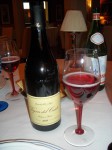 DOC
DOC
Maar er zijn ook Lambrusco’s met kwaliteiten die verder gaan dan die van de gemiddelde frisdrank. Zij hebben een DOC-status hebben verdiend en zijn altijd met een natuurkurk afgesloten. We onderscheiden:
Lambrusco Reggiano
Een meer algemene herkomstbenaming met wijnen die gemaakt moeten zijn van de Lambrusco Maestri, Marani, Montericco en Salamino. Ook is tot tot 15% Ancellotta toegestaan, een druif die waarschijnlijk verwant is aan de Lambrusco. Hou wel in de gaten dat er ook daadwerkelijk Lambrusco op het etiket staat, anders is een Reggiano DOC niets meer dan een ‘mousserende Ancellotta.
Lambrusco Grasparossa di Castelvetro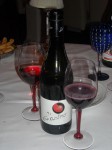
Minimaal 85% Lambrusco Grasparossa en afkomstig van wijngaarden rond de gemeente Castelvetro ten zuiden van Modena. De wijnen uit deze kleinste Lambrusco-DOC zijn diep van kleur en hebben een zekere rondeur ondanks een stevige tanninestructuur.
Lambrusco Salamino di Santa Croce
Minstens 90% Lambrusco Salamino uit de streek rond Santa Croce, ten westen van Sorbara. Wijnen met een vurige paarse kleur en opwekkende zuren.
Lambrusco Sorbara
De Sorbara is de lichtste, meest verfijnde en meest aromatische soort en dankt zijn naam aan het dorpje Sorbara ten noorden van Modena. Zijn kleur varieert, maar is vaak elegant roze. Verplicht is het gebruik van minimaal 60% Lambrusco Sorbara, aangevuld met uitsluitend Salamino. Zowel de Salamino als Sorbara hebben een van nature frisse zuurgraad en de Lambrusco di Sorbara is dan ook een uitstekend aperitief.
Lambrusco Mantovano
Dit is de enige Lambrusco die niet uit Emilia-Romagna komt, maar uit Lombardije.
Voorgeschreven zijn de het gebruik van de Lambrusco Maestri, Marani, Salamino en de Lambrusco Viadanese, allen 85 tot 100%.
Lambrusco Colli di Scandiano e di Canossa Lambrusco Montericco rosato frizzante
Licht gekleurde lambrusco van Lambrusco Montericco (minimaal 85%), zonodig aangevuld met Grasparossa, Marani, Salamino of Malbo Gentile.
Lambrusco Grasparossa Colli di Scandiano e Canossa
Minimaal 85% Lambrusco Grasparossa, aangevuld met Marani, Montericco, Ancellotta, Malbo gentile of Croatina.
Mousserend
Hoewel er ook stille Lambrusco is, zijn de meeste wijnen mousserend, zowel frizzante als spumante. In het midden van de vorige eeuw ondergingen de wijnen de zogenaamde ‘metodo classico’met een 2e gsiting op fles. Tegenwoordig wordt vrijwel alle Lambrusco met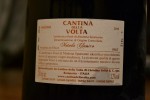 de Charmat techniek gemaakt, hetgeen veel eenvoudiger en goedkoper is. Enkele producenten zijn de ‘metodo classico’ weer gaan gebruiken en de resultaten tonen aan dat deze techiek de wijn meer inhoud en spanning geeft. Een uitstekend voorbeeld is de Lambrusco Rosé di Modena Spumante Metodo Classico van Cantina della Volta.
de Charmat techniek gemaakt, hetgeen veel eenvoudiger en goedkoper is. Enkele producenten zijn de ‘metodo classico’ weer gaan gebruiken en de resultaten tonen aan dat deze techiek de wijn meer inhoud en spanning geeft. Een uitstekend voorbeeld is de Lambrusco Rosé di Modena Spumante Metodo Classico van Cantina della Volta.
Serveren
Lambrusco wordt koel gedronken, waarbij de temperatuur varieert van 4 tot 14° C. Als glas volstaat een normaal wijnglas. Dat glas mag overigens best ruim gevuld zijn, want Lambrusco is licht verteerbaar……
Lambrusco in de gastronomie
Traditioneel zijn rijke gerechten waarin vet niet wordt geschuwd. Lambrusco is aanbevolen bij salami, parmigiano, mortadella en gerechten (pasta) met vleessauzen. Het is geen toeval dat Lambrusco een klassieker is bij pasta met een Bolognese-saus. Maar Lambrusco doet het ook fantastisch bij oer-Hollandse stamppotten zoals die met andijvie of boerenkool (zeker als er uitgebakken spekjes in zitten). En waarom geen Lambrusco met Oud & Nieuw, ze zijn heerlijk bij oliebollen!

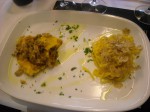
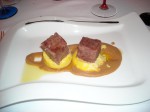
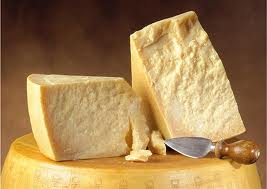
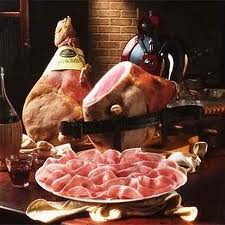
In de zomer is een droge Lambrusco een heerlijke dorstlesser, waarvan rustig ‘een tweede’ glas mag worden genoten vanwege het vaak lagere percentage alcohol. Hoewel de beste Lambrusco’s droog zijn, zijn er verschillende die net iets zoeter zijn en ook prima te genieten. De Pruno Nero van Cleti bijvoorbeeld of de Rosso Dolce van Medici Ermete. Wie overigens van de laatstgenoemde producent de ‘Concerto’ proeft, weet waarom ik een voorkeur heb voor de droge versies.
Lambrusco: doen !!
Het is dus tijd om alle vooroordelen aan de kant te schuiven en heerlijk te genieten van een mooie Lambrusco, eens een ander soort rosé of rode wijn en beslist een ander soort bubbel.
De afgelopen maanden werden diverse Lambrusco’s geproefd en vielen de volgende producenten op.
-Fattoria Moretto Canova (Lambrusco Graparossa di Castelvetro Secco)
– Cabesina (Spergola Spumante Metodo Classico, Casali, Colli di Scandiano e di Canossa)
– Casali (Pra di Bosso, Lambrusco Reggiano Rosso Secco en Roggio de Pradello, Pas Dosé
en Sanruffino Grasparossa)
– La Battagliola (Grasparossa Classico Frizzante en La Nuit Rosé Grasparossa Spumante)
– Podere il Saliceto (Lambrusco di Modena ‘L’Albone’ en Lambrusco di Sorbara ‘Falistra’)
– Moro Paola Rinaldini (Vecchio Moro Lambrusco Emilia IGT)
– Tenuta di Aljano (Sette filari Emilia IGT)
– Medici Ermete (Lambrusco Reggiano ‘Concerto’, Rosso Reggiano ‘Assolo’, Lambrusco
Grasparossa ‘Bocciolo’, Lambrusco Reggiano ‘Quercioli’, Lambrusco Spumante Rosé
Metodo Classico ‘Unique’
– Cà de’ Medici (Lambrusco Reggiano ‘Piazza San Prospero’, Lambrusco Igp ‘Foieta’,
Lambrusco Reggiano ‘Sparko’
– Venturini Baldini
– Puianello (‘Amarcord’ Lambrusco Montericco, ‘Contrada Borgoleto’ Lambrusco Reggiano)
– Lombardini (Lambrusco Reggiano ‘Il Campanone’ en ‘Nubilaia’)
– Ariola (Lambrusco Emilia IGT ‘Marcello’)
– Lamoretti
– Cantine Ceci (Otello Nero di Lambrusco)
– Monte delle vigne
– Fattoria Moretto (Lambrusco Grasparossa di Castelvetro ‘Monovitigno’en ‘Canova’)
– Cleto Chiarli (‘Premium’ Vecchia Modena Lambrusco di Sorbara, ‘Vigneto Enrico
Cialdini’, ‘Centenario’ en ‘Pruno Nero’.
Met dank aan o.a.
Marta Geri 
Resp. Comunicazione
ENOTECA REGIONALE EMILIA ROMAGNA
www.enotecaemiliaromagna.it
www.facebook.com/EnotecaRegionaleEmiliaRomagna
Twitter@EnotecaEmRom
Sounds like logic, but it isn’t. It’s the same for sparkling wines. To most people, they’re white, pink at most, at least French and therefore Champagne. All sparkling wines are named Champagne: Vonkelwijn, Prosecco, Cremant de Loire, Alka Seltzer, TrentoDoc, Franciacorta, Clairette de Die and many more. Too bad, because besides several splendid Champagnes, there are so many beautiful bubbles with their own identity.
Lambrusco
In part 2 of the bubbles-series, attention for Lambrusco, because I think this wine deserves attention for several reasons. Many who are ignorant, taunt this wine when and wherever they can. But doing so, these know-it-alls are actually just showing their lack of expertise. Fortunately, in the Netherlands, we have several objective and experienced wine writers and colleagues like Cuno van ’t Hoff, Esmee Langereis (Elle Eten), Jeroen Margés, Ingrid Larmoyeur, Harold Hamersma and Onno Kleijn have written many positive articles or colums on Lambrusco.
Unique
It’s not a surprise that not everybody responds equally entousiastic to this wine. Lambrusco has a unique character and who has never tasted it, is easily confused. The wine does not fit in an everyday reference frame. The color can be confusing (sometimes pink and sometimes opaque purple), the taste (boisterous fruit and often a powerfull bitter and lively acidity), the alcoholpercentage (nice and low), price (also pleasantly low) and also it use and potential in gastronomy are unknwon to many. A brief explanation can be useful.
Emilia-Romagna
Lambrusco is made in Emilia-Romagna, the region well-known for Ferrari, ceramics, the University of Bologna (the oldest one in the world still in function), Prosciutto di Parma, Parmigiano Reggiano, all kinds of autochtonal pasta-types and salumi, piadini, mortadella, aceto balsamico and of course wine; especially Lambrusco in Emilia and Sangiovese in Romagna.
Emilia-Romagna stands for an annual production of nearly 1 billion bottles of wine. Most of it is cheap plonk, coming from the furtile lowlands of the Po-valley in Emilia. Here only the pergola-pruned vineyards protect the grapes from the blistering summer heat. Yields are high and quality is in general, not more than reasonable. Completely different is the potential of vineyards in the foothills and on higher grounds, where temperatures are somewhat tempered (especially at night) and the grapes can develop more delicate and complex flavors, particularly in Romagna.
The grape
It seems so simple; a wine named after it’s grape variety. But it’s not that easy, because there’s a big difference between Lambrusco and Lambrusco. The grape belongs to the Lambrusco family, a big family with several brothers, sisters and cousins. It is aVitis Vinifera and was already known and used by the Etrusks as Lambrusca. And just to keep things simple: This Lambrusca has absolutely nothing to do with the Lambrusca-riparia, the American hybrid.
In the course of centuries over 60 varieties arose by spontaneous crossings ot mutation, some of which are found in the Veneto, Piedmont and even in Sicily. The most important ones are the Grasparossa, Maestri, Marani, Monstericco, Sorbara and Salamino, sometimes known under various local synonyms as Abrostine, Abrostino, Abrostolo Dolce, Abrustano Nero, Broustiana Rose, Colore, Colorino di Lucca, Colorino di Valdarno, Colorino Pisano, Jomarello, Raverusto and Tintiglia II. The Salamino is the most common variety.
Plonk
Every one of these varieties and the way in which they are grown and processed, reflect Lambrusco in all shapes and sizes. Colors vary from white and pink to purple, tastes from dry to sweet, the wines can be still or sparkling and the quality can be anything from dramatically low to extremely high. Most Lambrusco are industrial products with nothing more than a general determination of origin (IGT) and few conditions to secure a certain quality. These are the 2-liter bottles (with screw cap) that we find in many supermarkets or real Turkish pizzerias (of course with a Maroccan, Armanian or Egyptian staff) and are not more than
‘sweet plonk’. The Netherlands is, unfortenately, not the only country where these cheap, dubious fastfood-wines are populair. The Mariani family (well-known for their domain Banfi in Tuscany) made their fortune selling billions of gallons (more or less Italian) Lambrusco in the United States.
DOC
But there is also good Lambrusco, a lot more interesting than those who have little more to offer than an average soda. They’ve earned their DOC-status and are always sealed with a natural cork.
Lambrusco Reggiano
A more general appellation for wines made from the Lambrusco Maestri, Marani, Montericco and Salamino. Also permitted is the use of Ancellotta (up to 15%), a grape that’s likely to be related to Lambrusco.
Lambrusco Grasparossa di Castelvetro
At least 85% Lambrusco Grasparossa and coming from vineyards around the town of Castelvetro, south of Modena. The wines from this smallest Lambrusco-DOC are deep in color and possess a certain roundness despite a firm tannin structure.
Lambrusco Salamino di Santa Croce
At least 90% Lambrusco Salamino from the area around Santa Croce, west of Sorbara. Wines with a deep purple color and incentive acidity.
Lambrusco Sorbara
The Sorbara is the lightest, most refined en most aromatic kind and thanks it’s name to the little village of Sorbara north of Modena. It’s color varies, but is often elegantly pink. Mandatory is the use of at least 60% Lambrusco Sorbara, supplemented with Salamino only. Both the Salamino and Sorbara have a natural fresh acidity and so the Lambrusco di Sorbara makes an excellent aperitive.
Lambrusco Mantovano
The only Lambrusco that’s not from Emilia-Romagna, but from Lambardia. Obliged are the use of Lambrusco Maestri, Marani, Salamino and the Lambrusco Viadanese, all for 85 to 100%.
Lambrusco Colli di Scandiano e di Canossa Lambrusco Montericco rosato frizzante
Light colored lambrusco made from Lambrusco Montericco (at least 85%), when necesarry supplemented with Grasparossa, Marani, Salamino or Malbo Gentile.
Lambrusco Grasparossa Colli di Scandiano e Canossa
Minimum of 85% Lambrusco Grasparossa, supplemented with Marani, Montericco, Ancellotta, Malbo gentile or Croatina.
Sparkling
Although still Lambrusco does excist, most wines are sparkling, frizzante or spumante. Mid last century wines were made using the so called ‘metodo classico’ having a second fermentation in the bottle. Nowadays practically all Lambrusco is made using the Charmat technique, which is way easier and cheaper. Some producers started to use ‘metodo classico’ again and the results show that this method gives the wine more contents and tension. An excellent example is the Lambrusco Rosé di Modena Spumante Metodo Classico by Cantina della Volta.
Serve
Lambrusco is served chilled, temperatures vary from 4 to 14° C. Some prefer a ‘flute’, but a normal wine glass is perfect for Lambrusco. By the way, it’s okay to pour some more; Lambrusco is low in alcohol, light and easy to digest.
Lambrusco in gastronomy
Traditional are rich dishes in which fat is not shunned. Lambrusco is recommended with salami, parmigiano, mortadella and dishes (pasta) with meat sauce. It’s no coincidence that Lambrusco and pasta with Bolognese-sauce make such a great combination. But Lambrusco also goes very well with typical Dutch cuisine such as hotchpot with endive or kale (especially when there’s bacon in it). And why not serve Lambrusco at new year, it’s great with our traditional Dutch New Years-speciality called ‘oliebollen’!
In the summertime a dry Lambrusco is a delicious thirst quencher, and enjoying a second glass is really okay because of it’s low(er) alcohol percentage. Although the best Lambrusco are dry, there are several Lambrusco that are off-dry and also very enjoyable. For instance the Pruno Nero from Cleti or the Rosso Dolce from Medici Ermete. Who has ever tasted the ‘Concerto’ from this last mentioned producer, understands why I prefer the dry version.
Lambrusco: YES !
So, it’s time to slide all your prejudices aside and enjoy a good Lambrusco, something else than a rosé or red wine, and definitely something else than any other bubbly.
I tasted many bottles of Lambrusco over the last months and the following producers stood out.
-Fattoria Moretto Canova (Lambrusco Graparossa di Castelvetro Secco)
– Cabesina (Spergola Spumante Metodo Classico, Casali, Colli di Scandiano e di Canossa)
– Casali (Pra di Bosso, Lambrusco Reggiano Rosso Secco en Roggio de Pradello, Pas Dosé & especially their Sanruffino Grasparossa)
– La Battagliola (Grasparossa Classico Frizzante en La Nuit Rosé Grasparossa Spumante)
– Podere il Saliceto (Lambrusco di Modena ‘L’Albone’ en Lambrusco di Sorbara ‘Falistra’)
– Moro Paola Rinaldini (Vecchio Moro Lambrusco Emilia IGT)
– Tenuta di Aljano (Sette filari Emilia IGT)
– Medici Ermete (Lambrusco Reggiano ‘Concerto’, Rosso Reggiano ‘Assolo’, Lambrusco Grasparossa ‘Bocciolo’, Lambrusco Reggiano ‘Quercioli’, Lambrusco Spumante Rosé Metodo Classico ‘Unique’
– Cà de’ Medici (Lambrusco Reggiano ‘Piazza San Prospero’, Lambrusco Igp ‘Foieta’, Lambrusco Reggiano ‘Sparko’
– Venturini Baldini
– Puianello (‘Amarcord’ Lambrusco Montericco, ‘Contrada Borgoleto’ Lambrusco Reggiano)
– Lombardini (Lambrusco Reggiano ‘Il Campanone’ en ‘Nubilaia’)
– Ariola (Lambrusco Emilia IGT ‘Marcello’)
– Lamoretti
– Cantine Ceci (Otello Nero di Lambrusco)
– Monte delle vigne
– Fattoria Moretto (Lambrusco Grasparossa di Castelvetro ‘Monovitigno’en ‘Canova’)
– Cleto Chiarli (‘Premium’ Vecchia Modena Lambrusco di Sorbara, ‘Vigneto Enrico
– Cialdini’, ‘Centenario’ en ‘Pruno Nero’.
Special thanks to:
Marta Geri
Resp. Comunicazione
ENOTECA REGIONALE EMILIA ROMAGNA
www.enotecaemiliaromagna.it
www.facebook.com/EnotecaRegionaleEmiliaRomagna
Twitter@EnotecaEmRom

